- ALFA CORE Saudi Arabia, the parent company of RASIS Egypt, proudly delivers specialized Rope Access services for the oil & gas, petrochemical, and heavy industries across Egypt and the MENA region. Our operations are built on safety, efficiency, and international standards.
- Our rope access crews are IRATA-certified and qualified, capable of executing complex tasks both onshore and offshore. We provide safe and cost-effective access to elevated, confined, or hard-to-reach locations—minimizing the need for scaffolding or heavy lifting equipment.
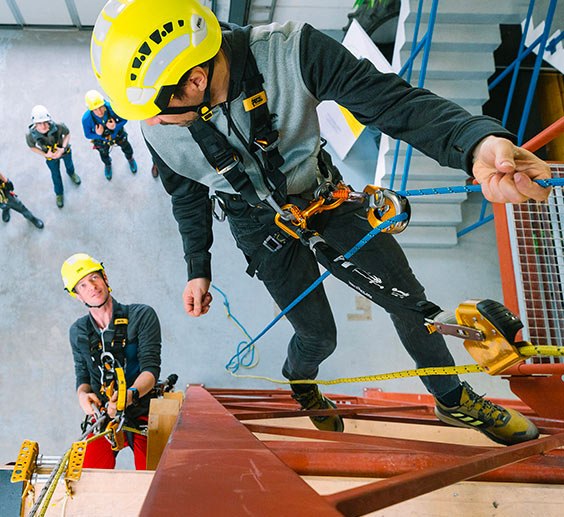
What industries benefit from rope access services ?
What types of work can be done using rope access ?
We serve clients in oil & gas, petrochemical, chemical, and oil refining industries, both onshore and offshore.
-
A: Rope access is ideal for:
-
Inspection and testing of structures
-
Structural surveys
-
Non-destructive testing (NDT)
-
Access to confined spaces
-
Working on masts, towers, and pylons
-
Construction, maintenance, and repair
-
Concrete repair on bridges and high-rise buildings
-
Sandblasting, water jetting, and painting of rigs
-
Wind turbine maintenance
-
Sealant installation and reinstatement
-
Secondary fixings
-
Cladding replacement
-
Flare stack erection and maintenance
-
Industrial cleaning and surface preparation
-
Spray painting, roller painting, and full surface finishing
Onshore Facilities
For onshore oil and gas plants, rope access enables:
-
Inspection and maintenance of vessels, tanks, and piping systems
-
Welding and repair operations
-
Cleaning and painting of structures
-
Installation and removal of equipment
-
Confined space access for specialized tasks
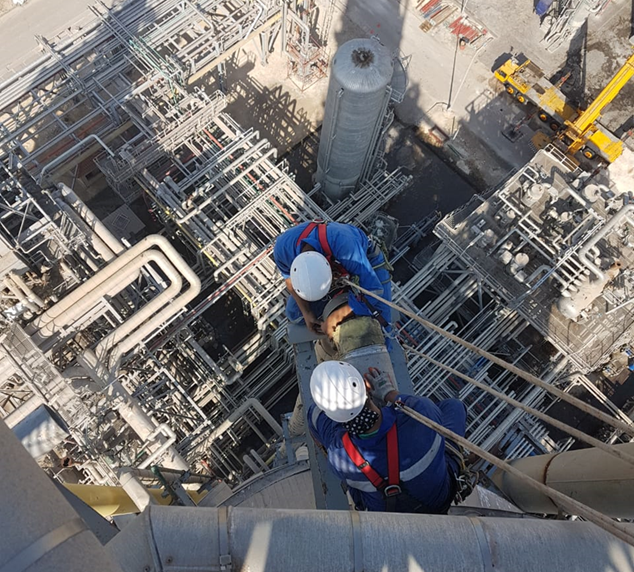
Offshore Operations
In offshore oil and gas environments, rope access is extensively used for:
-
Maintenance and inspection of platforms, rigs, and pipelines
-
Non-destructive testing (NDT) and structural surveys
-
Equipment maintenance in harsh environmental conditions
-
Emergency repairs and response operations
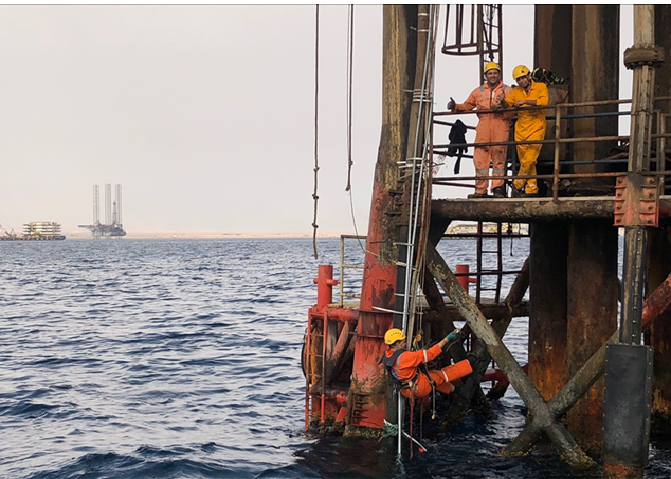
Specific Work Tasks
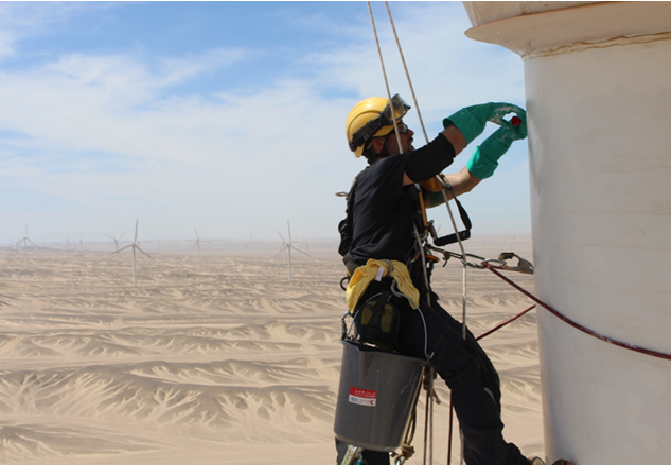
Rope access teams can perform a wide range of technical operations including:
-
Surface preparation and treatment
-
Insulation and PFP (Passive Fire Protection) application
-
Surveys and certifications (DROPS, Lifting Equipment, Drill Strings, Class Surveys)
-
Maintenance, repair, modification, and replacement of assets like flare tips, risers, caissons, and jacket substructures
Cost Efficiency
Rope access offers significant cost savings compared to traditional access methods:
-
Eliminates need for expensive scaffolding and heavy machinery
-
Potential savings of $1.98 million annually in maintenance work
-
Reduces overall project costs substantially
Speed and Efficiency
The method provides rapid deployment capabilities:
-
Quick deployment of technicians to work sites
-
Faster inspections and repairs than conventional methods
-
Accelerated project completion times
-
Minimal setup time compared to scaffolding
-
Operational Advantages
-
Minimal site disruption with smaller operational footprint
-
Allows maintenance work without interfering with ongoing operations
-
Versatile access to both vertical and horizontal surfaces
-
Suitable for concurrent activities in exposed areas
-
Safety Standards and Training
Certification Bodies
The industry is regulated by internationally recognized organizations:
-
IRATA (Industrial Rope Access Trade Association) International
-
Industry Recognition
Major oil and gas service companies have embraced rope access as a core capability. Altrad Services considers itself among the best contractors in rope access techniques for the oil and gas industry, representing one of the largest pools of rope access technicians worldwide. The technique's superior safety track-record compared to traditional access methods has made it the preferred choice for many operators.
Safety Protocols
Safety measures include:
-
Thorough risk assessments before each operation
-
Two independent rope systems for redundancy
-
Regular equipment inspections and maintenance
-
Emergency response plans and rescue procedures
-
Use of intrinsically-safe tools in hazardous environments
-
Training Levels
Rope access technicians must complete rigorous certification programs with three levels of competency:
-
Level 1: Basic technicians working under Level 3 supervision
-
Level 2: Advanced technicians with complex skills, still supervised
-
Level 3: Fully qualified technicians with complete responsibility for safety, rigging, and rescue operations
Real-World Implementation
Oil and gas companies implement rope access through various contract structures:
-
Framework contracts for dedicated teams performing routine maintenance
-
Specialized project teams for major modifications and asset revamps
-
Emergency response capabilities for urgent repairs
-
Remote video capabilities for real-time oversight and decision-making
Rope access has proven successful in diverse geographical locations including Australia, the Gulf of Mexico, Africa, the Middle East, South America, and Norway, demonstrating its global applicability in oil and gas operations.
The combination of cost-effectiveness, safety, and operational efficiency makes rope access an indispensable tool for modern oil and gas facility management, enabling companies to maintain their assets while minimizing downtime and operational disruption.
-
-
Rope Access for Building Maintenance and Construction
- Rope access is a specialized technique used for accessing hard-to-reach areas on buildings and structures for maintenance, inspection, cleaning, and construction work. It involves using ropes, harnesses, and specialized equipment to safely reach elevated or difficult-to-access locations without requiring traditional access methods like scaffolding or aerial lifts.
- What is Rope Access?
- Rope access is a safe, efficient, and cost-effective method for reaching difficult locations on buildings and structures. The technique typically employs a two-rope system: one working rope supports the worker, while a safety rope provides backup fall protection. This system allows technicians to access every part of a building quickly, easily, and safely.
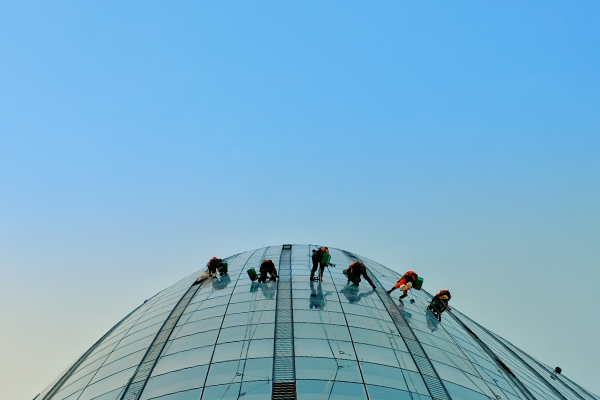
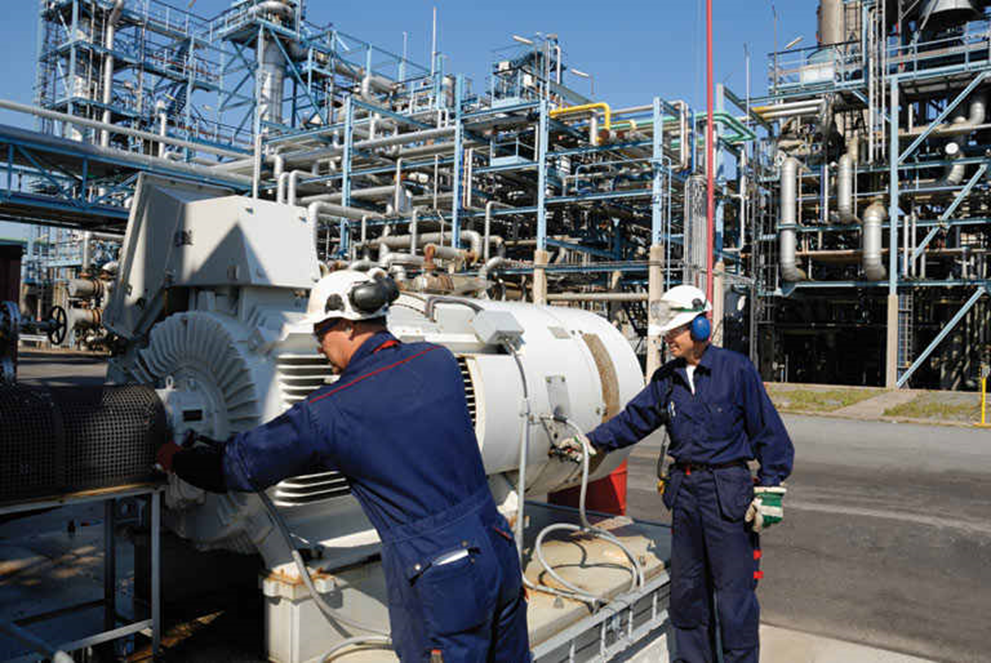
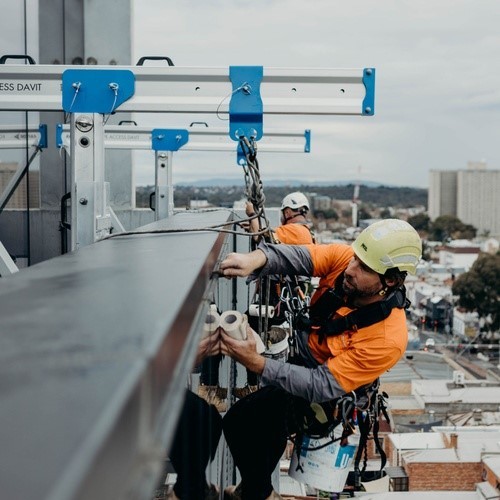
- Key Applications in Building Work
- Building Maintenance Services
- Rope access is extensively used for various building maintenance tasks, including:
- Window cleaning and facade maintenance
- Brick and stone repointing and replacement
- Concrete repair and painting
- Gutter clearance and leak investigations
- Facade inspections
- LED light installations
- Signage removal and installation
- The technique relies on secure anchor points, using existing structural elements or specially installed anchors as attachment points for the ropes. All equipment is regularly inspected and maintained to ensure optimal performance
- Professional Requirements
- Rope access work must be conducted by trained and certified professionals who follow strict safety guidelines and adhere to relevant industry standards and regulations. Companies providing rope access services typically hold certifications in Quality (ISO 9001:2015), Safety (ISO 45001:2018), and Environmental (ISO 14001:2015) management systems
- Rope access represents a modern, efficient solution for building maintenance and construction challenges, offering significant advantages over traditional access methods while maintaining the highest safety standards.
- Minimal Disruption
- Unlike scaffolding or heavy machinery, rope access methods are less intrusive, allowing work to be carried out without disrupting other site activities. This makes it ideal for occupied buildings where minimizing disruption to tenants is crucial.
- Equipment and Safety Standards
- Rope access technicians use various specialized equipment including:
- Ropes and harnesses
- Descenders and ascenders
- Carabiners and pulleys
- Specialized connectors
- Safety lines and backup systems
- The technique relies on secure anchor points, using existing structural elements or specially installed anchors as attachment points for the ropes. All equipment is regularly inspected and maintained to ensure optimal performance
- Professional Requirements
- Rope access work must be conducted by trained and certified professionals who follow strict safety guidelines and adhere to relevant industry standards and regulations. Companies providing rope access services typically hold certifications in Quality (ISO 9001:2015), Safety (ISO 45001:2018), and Environmental (ISO 14001:2015) management systems
- Rope access represents a modern, efficient solution for building maintenance and construction challenges, offering significant advantages over traditional access methods while maintaining the highest safety standards.
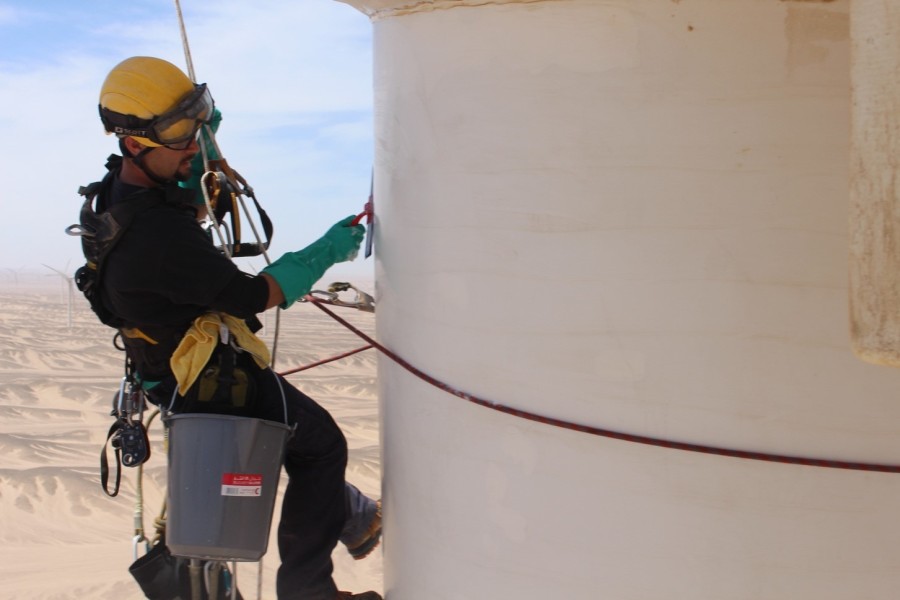
Contacts
Address:
Riyadh, Saudi Arabia
Phone:
+966546451947
+966564337314
Address:
Monufia, Egypt
Phone:
+201000969853
+201022223990
Email:
info@alfa-sa.net

